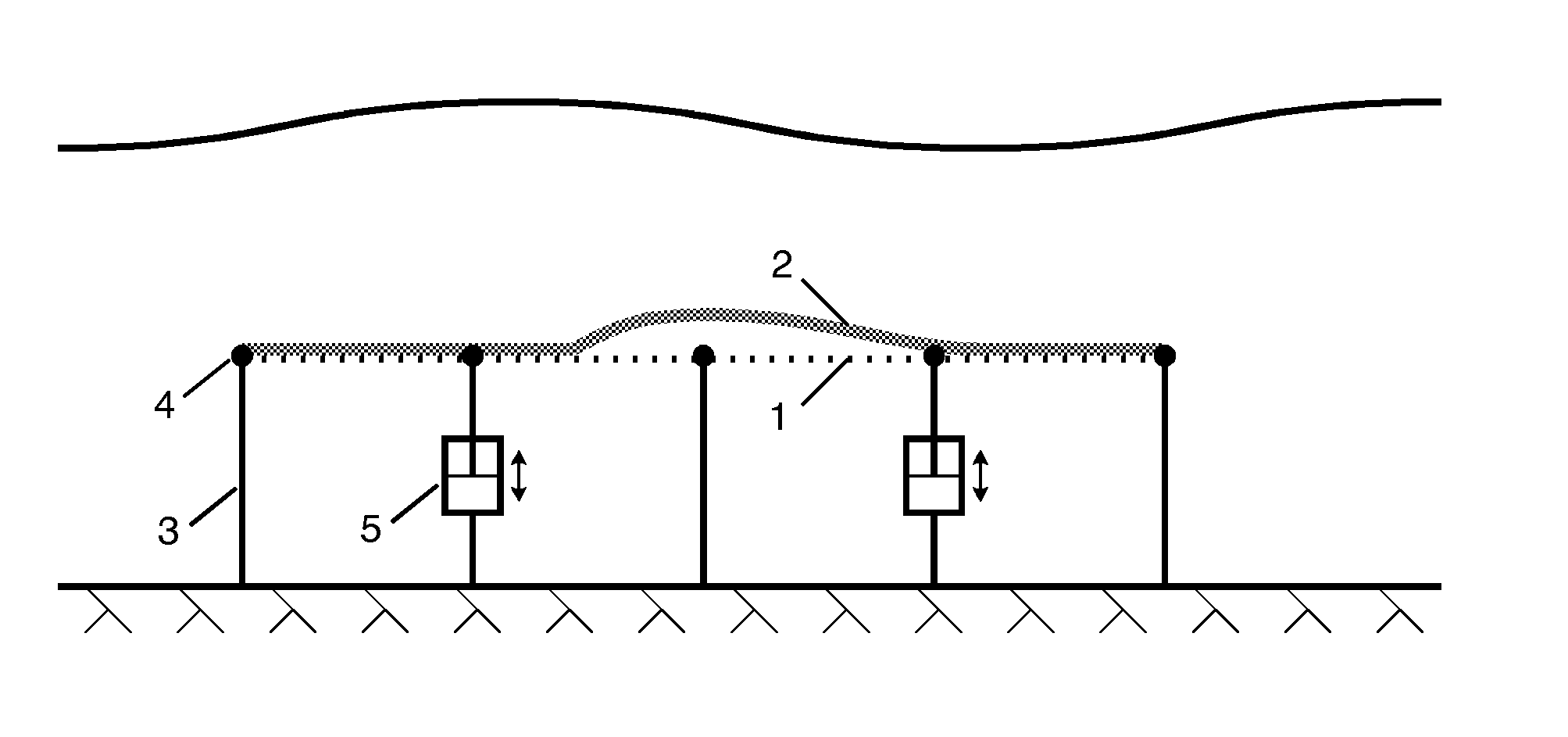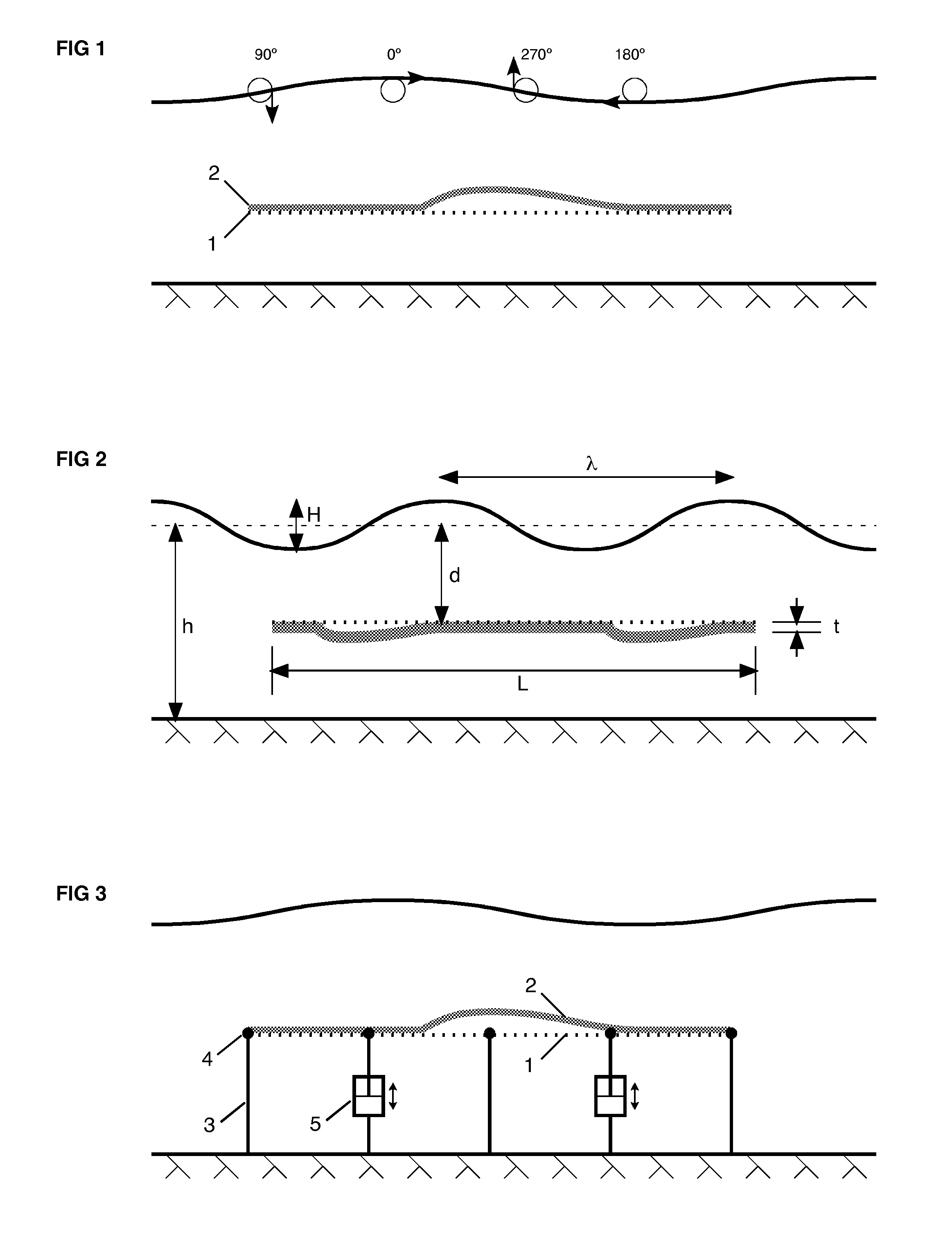Wave Trap
a trap and wave technology, applied in the field of traps, can solve the problems of affecting the safety of ships, and the upper limit of the wave period that those can protect, so as to achieve the effect of efficient attenuation of waves without diminishing water circulation, preventing accidents, and reducing the risk of accidents
- Summary
- Abstract
- Description
- Claims
- Application Information
AI Technical Summary
Benefits of technology
Problems solved by technology
Method used
Image
Examples
Embodiment Construction
[0014]The wave energy conversion is accomplished by breaking the orbital motion in the water column during a part of the wave phase, whereby a pressure difference results. Refer to FIG. 1. The device consists of a rigid but permeable plane (1), located approximately horizontally at a depth between the water surface and bottom, upon which a flexible slab (2) rests kept in place by gravitation, and optionally fastening devices, for example ropes, that prevent it from sliding horizontally with the waves. If the slab is heavier than water it is placed above the plane as in FIG. 1, but if it is lighter it is placed below as in FIG. 2.
[0015]When the orbital motion presses the slab away from the plane, as at phase angle 270° in FIG. 1, the slab yields. Since the slab is resting on the underlying water the pressure of the latter increases somewhat. At phase angle 90° the opposite conditions exist; the plane stops the slab so that the orbital motion meets rigid resistance. A relative low pre...
PUM
 Login to View More
Login to View More Abstract
Description
Claims
Application Information
 Login to View More
Login to View More - R&D
- Intellectual Property
- Life Sciences
- Materials
- Tech Scout
- Unparalleled Data Quality
- Higher Quality Content
- 60% Fewer Hallucinations
Browse by: Latest US Patents, China's latest patents, Technical Efficacy Thesaurus, Application Domain, Technology Topic, Popular Technical Reports.
© 2025 PatSnap. All rights reserved.Legal|Privacy policy|Modern Slavery Act Transparency Statement|Sitemap|About US| Contact US: help@patsnap.com



